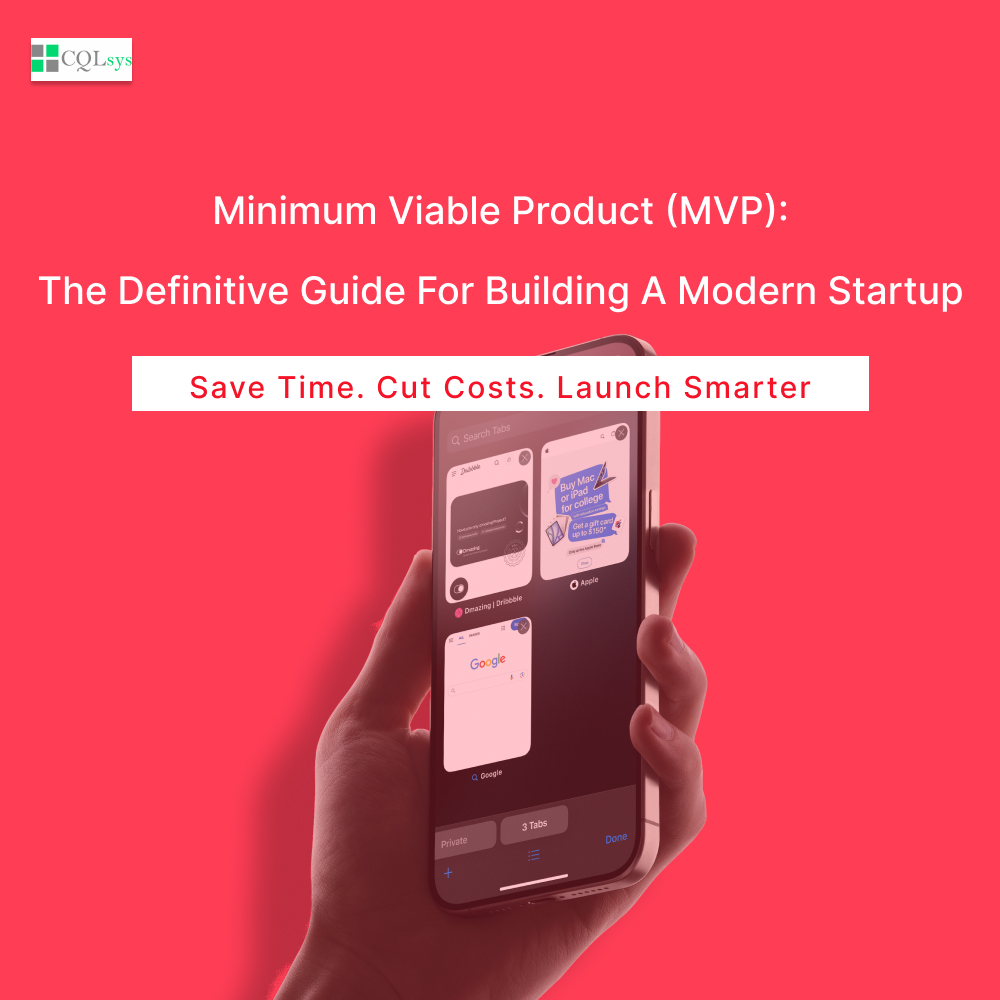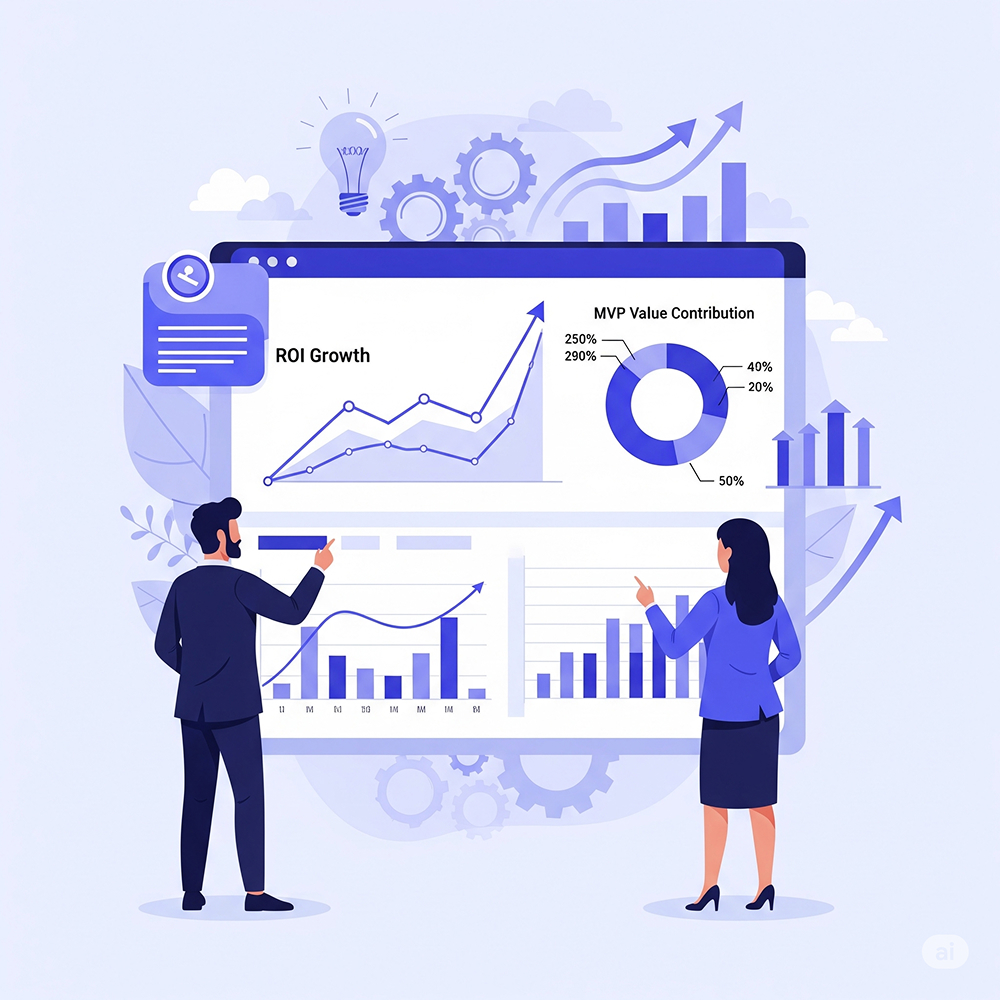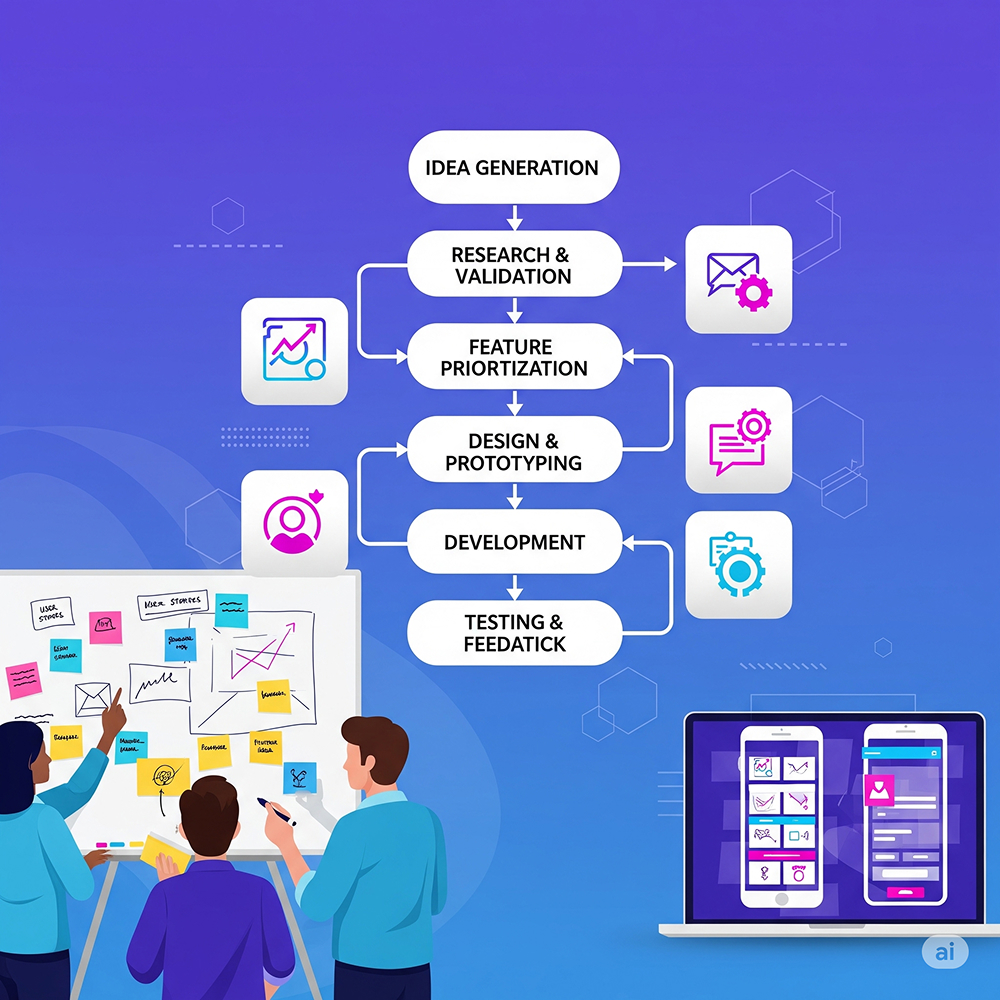Minimum Viable Product (MVP): The Definitive Guide for Building a Modern Startup

In the relentless world of startups, brilliant ideas are a dime a dozen, but the path from concept to commercial success is a minefield of risks. The harsh reality is that a stunningly high percentage of new ventures fail, often for a single, heartbreaking reason: they built a product that nobody wanted. This isn't a failure of engineering or vision; it's a failure of market validation. A dedicated team spends months, even years, and millions of dollars perfecting a solution, only to discover too late that their core assumptions were wrong. The result is a beautifully engineered product that finds only a deafening silence in the market. This tragic narrative of wasted time, money, and talent is the very reason the Minimum Viable Product (MVP) has become the definitive, non-negotiable strategy for modern entrepreneurs. It is the structured, data-driven answer to a fundamental question: "How can we build with certainty in a world of uncertainty?"
The MVP Philosophy: A Core Principle of Intelligent Risk
At its core, an MVP is the version of a new product that enables a team to gather the maximum amount of validated learning about customers with the least effort.
This definition, popularized by Eric Ries in his seminal book "The Lean Startup," is highly precise. It's not about building the bare minimum of features; it's about building the right features to test your riskiest assumptions. The "viable" part of the MVP is just as critical as the "minimum"—it must be a functional product that solves a problem and delivers genuine value to early users. It is an investment in learning, designed to provide concrete answers to critical business questions.
The MVP is a distinct artifact in the product development lifecycle and should not be confused with other common terms:
- A Prototype: This is a simulation or mock-up used for internal testing and visualization. It lacks a real backend, a live user base, and is typically used to test user flow and design concepts. It answers the question, "What could this look like?" Prototypes are for ideation, not for market validation. A paper prototype, for example, consists of simple drawings and sticky notes used to simulate a user interface.
- A Proof of Concept (PoC): This is an internal project aimed at determining the feasibility of a specific technical component or a novel idea. It’s a binary test that answers, "Can we build this?" A PoC might prove that a new AI algorithm works, but it doesn't prove that a user cares enough to pay for it.
- An MVP: This is a functional, live product with real users. It is a live experiment in the market, designed to answer the definitive business questions, "Should we build this, and how should it evolve?"
The MVP's purpose is not to launch a perfect product, but to launch a powerful learning engine. It is the first loop in a continuous Build-Measure-Learn feedback cycle, providing the data needed to make informed, strategic decisions.
The Strategic Imperative: The MVP's ROI and Organizational Value

For a data-driven, action-oriented audience, the value of the MVP is best measured by its impact on a venture's most critical metrics. It is a strategic imperative that directly addresses the most common failure points of a startup, while simultaneously fostering a culture of innovation.
- Mitigate Market and Financial Risk: The number one reason startups fail is a lack of market need. By launching an MVP, you validate or invalidate your core hypothesis before committing significant capital and engineering resources. This is the most effective way to de-risk a venture from an investor's perspective. You're not just building; you're conducting a scientific experiment to prove demand, thereby reducing both market risk (is there a customer?) and financial risk (will our investment be returned?). The ROI of an MVP is immeasurable when it prevents you from spending millions on a solution that will never find a home.
- Accelerate Market Entry & Capture First-Mover Advantage:Building a fully-featured product from scratch can take years, allowing competitors to beat you to market. The MVP allows you to launch in weeks or months, not years. This speed gives you a critical first-mover advantage, enabling you to capture early adopters, establish brand presence, and gather data while your competitors are still in the development phase.
- Drive Product Strategy with Data:A full product launch relies on assumptions. An MVP relies on data. The Build-Measure-Learn feedback loop is the engine of the MVP process, giving you quantitative and qualitative insights from real user behavior. This validated learning informs your product roadmap, ensuring every subsequent feature is a direct response to a proven user need, not a guess. Key metrics like Conversion Rate, Churn Rate, and Net Promoter Score (NPS) from your MVP are more valuable than any market research report.
- Optimize Capital and Development Resources: Every feature you build but don't use is a waste of time, money, and talent. By focusing only on the most critical features for your MVP, you ensure your limited resources are used efficiently. For developers and technical co-founders, this means avoiding "scope creep" and focusing on solving the core problem. For investors, it demonstrates financial discipline and a clear path to generating a return. The MVP forces you to do more with less.
- Fostering an Innovative Culture: The MVP is not just a tool; it's a mindset. It encourages a culture of continuous experimentation, learning, and adaptation. It empowers teams to "fail fast, learn faster," and to embrace a growth mindset. This resilience and comfort with iteration are invaluable organizational assets that are critical for long-term success.
A Comprehensive Toolkit of MVP Types: Real-World Applications
The MVP is a flexible framework that can manifest in various forms. Selecting the right type depends on your riskiest assumption and the nature of your business.
- Concierge MVP:
Implement OAuth 2.0 and JWTs (JSON Web Tokens) for modern, secure, and stateless authentication. These tokens should have short lifespans and be regularly refreshed, reducing the window of opportunity
for attackers if a token is compromised.
- Purpose:To gain deep qualitative insights by manually providing the service.
- How it Works::You personally serve a small group of customers to understand their needs and behavior. This approach is ideal for complex B2B services or highly personalized consumer products. It is the purest form of validated learning.
- Case Study: Food on the Table. Before building a sophisticated recipe and grocery-list app, the founder manually created personalized meal plans for customers. This manual process proved the value proposition and justified the investment in a scalable product.
- Wizard of Oz MVP:
- Purpose:To test the user experience of a future product without building the complex backend technology.
- How it Works::The user interacts with a seemingly automated product, but the operations are actually handled manually behind the scenes by a team.
- Case Study: Zappos The founder tested the market for online shoe sales by posting photos of shoes from local stores. When an order was placed, he would manually buy and ship the shoes. This "Wizard of Oz" approach validated the market demand for online shoe sales without the massive upfront cost of inventory and a warehouse.
- Single-Feature MVP:
- Purpose: To focus on and validate a single, high-impact feature.
- How it Works:: You launch an app or service that does one thing exceptionally well.
- Case Study: Zappos The founders of Burbn noticed users were only using one feature: photo-sharing with filters. They made the strategic decision to strip away everything else and relaunch as a "Single-Feature MVP" focused solely on this core functionality. This streamlined approach led to its explosive growth.
- Landing Page MVP:
- Purpose: To test market demand and gather early-adopter interest at minimal cost.
- How it Works::You create a simple landing page that explains your product concept and includes a call to action, such as a sign-up form for a waitlist or a "pre-order" button.
- Case Study: Buffer. Before building the social media scheduling tool, Buffer founder Joel Gascoigne created a single landing page that described the product. He measured how many people clicked the "Plans and Pricing" button, which indicated a strong demand that justified building the first version of the product.
- Explainer Video MVP:
- Purpose: To visually demonstrate a complex product or service and gauge interest before any development.
- How it Works:: A short, animated video clearly explains the problem your product solves and how it works.
- Case Study: Zappos Before developing the complex file-syncing technology, Dropbox founder Drew Houston created a simple explainer video that demonstrated how the product would function. The video went viral, generating over 75,000 sign-ups for a product that didn't exist yet, proving demand and securing critical funding.
- Crowdfunding MVP:
- Purpose: To validate demand and secure pre-sales for a physical product or ambitious project.
- How it Works:: You create a campaign on a platform like Kickstarter or Indiegogo with a detailed pitch, a prototype, and a clear funding goal. The number of backers and the amount of money raised directly validates market interest.
- Case Study: Zappos Before the Apple Watch, the Pebble Watch used a Kickstarter campaign to test the demand for a smartwatch. The campaign raised over $10 million, proving a massive market existed and funding the product's development.
- Community-First MVP:
- Purpose: To build a dedicated community around an idea before building the product itself.
- How it Works:: You create a Slack channel, a Reddit subreddit, or a private forum where your target audience can discuss their problems and potential solutions. The community's engagement validates the problem and helps you co-create the solution.
- Case Study: Zappos The platform started as a simple email list curated by Ryan Hoover, where he and other early adopters would share and discuss new products. This "Community-First MVP" validated the need for a discovery platform before he ever built the website.
The Process: A Step-by-Step Blueprint for Building a Robust MVP

Building an effective MVP is a disciplined process. Follow this blueprint to maximize your chances of success and ensure you are building the right thing.
- Validate Your Core Hypothesis: Every business is built on a set of assumptions. Your first step is to identify the single, most critical hypothesis that, if false, would cause your entire business to fail. This is your "Leap of Faith" assumption.
- Customer Interviews:Talk to at least 10-15 potential customers to understand their pain points.
- Fake Door Testing:Use a simple landing page with a feature that doesn't exist yet to see how many people click on it.
- Surveys:Use tools like SurveyMonkey or Typeform to gather quantitative data on your hypothesis.
- Define Your Core Value Proposition: What is the one thing your product will do better than any other solution? Your MVP must deliver on this promise. It should be "lovable" for a small group of users, not just "likable" for a large one. Your goal is to build a product that provides a positive, compelling user experience despite its limited feature set.
- Prioritize Features with a Framework: Avoid the urge to add features. Use a framework to ruthlessly prioritize what to build for your MVP.
- MoSCoW Method: Categorize features into "Must-have," "Should-have," "Could-have," and "Won't-have." Only your "Must-have" features (those essential to solving the core problem) should be included in the MVP.
- Kano Model: Plot features based on customer satisfaction vs. functionality. Focus on "Basic" features (expected by users) and "Performance" features (directly related to satisfaction) while identifying "Delight" features for later.
- Impact-Effort Matrix: Plot features on a grid based on their business impact and the effort required to build them. Focus on the high-impact, low-effort features for your MVP.
- Build a High-Quality Solution: The "minimum" in MVP does not mean low quality. Your MVP must be functional, reliable, and provide a positive user experience. A buggy or poorly designed product will deter early adopters and provide misleading, negative feedback. This requires a commitment to a clean codebase and a solid UX design, even at a small scale.
- Plan Your Metrics and Analytics Strategy:
Before you launch, decide exactly what you want to learn. Set up analytics to track key metrics like user activation, retention, and engagement. Your MVP is useless without a plan to measure its performance.
- Quantitative Data: Track metrics like Daily Active Users (DAU), Conversion Rate, and Time-on-Task.
- Qualitative Feedback: Conduct user interviews, send feedback surveys, and use tools like Hotjar to understand user behavior.
- Launch to a Targeted Audience: Launch your MVP to a small, hand-picked group of early adopters. This allows you to gather high-quality, actionable feedback and quickly iterate without the noise of a full-scale public launch.
- Measure, Learn, and Iterate: This is the most critical phase. Analyze the data and feedback you receive. What are users actually doing? What do they say they need? Use this validated learning to inform your next product development cycle. The Build-Measure-Learn loop is your continuous operating model. Based on your findings, you may choose to persevere (add new features), pivot (change your strategy), or perish (end the project).
Common Pitfalls to Avoid: The MVP Traps
Even experienced teams can fall into common MVP traps. Be aware of these to avoid wasting time and resources.
- The "Not Viable Enough" Trap:Building so few features that the product fails to deliver any real value. An MVP must solve a core problem for a user.
- The "Scope Creep" Trap: Adding too many "nice-to-have" features, turning your MVP into a full-scale product and negating the benefits of speed and resource efficiency.
- The "Perfect is the Enemy of Good" Trap: Over-polishing the MVP before launch. The goal is to get a functional product in front of users quickly to learn, not to release a flawless final product.
- The "Launch and Forget" Trap: Treating the MVP as a final product rather than the first step in an iterative process. The launch is just the beginning of your learning journey.
- The "Scaling" Trap: Building a massively scalable backend for a product that has not found product-market fit. This is premature optimization and a costly mistake.
- The "Feedback Overload" Trap: Receiving conflicting feedback from different users and not having a clear process for prioritizing what to act on.
- The "Scaling" Trap: Building a sloppy MVP with no regard for the future. While speed is critical, the code must be clean enough to be built upon in future iterations.
Conclusion: The MVP Mindset for Lasting Success
The Minimum Viable Product is the cornerstone of a disciplined, data-driven approach to building a successful startup. It’s a powerful framework that allows you to move with speed and confidence, turning assumptions into validated facts and innovative ideas into profitable businesses. By embracing the MVP mindset, you’re not just building a product; you’re building a foundation for sustainable growth and a culture of continuous learning. It’s the smart way to build, and in today's competitive landscape, it is the only way to build that truly makes sense.
Frequently Asked Questions (FAQ)
1. What’s the difference between an MVP, a prototype, and a PoC?
- PoC: Proves an idea or technology can work (“Can we build this?”)
- Prototype: Visual/mock-up for testing or design (“How would it look?”)
- MVP: Functional product released to real users for feedback (“Should we build this, and will people use it?”)
2. Does “minimum” mean low quality?
No. “Minimum” refers to features, not quality. An MVP must be reliable, user-friendly, and deliver core value.
3. How do I choose features for an MVP?
Include only the essential features that solve the user’s main problem. Use prioritization frameworks like MoSCoW (Must-have, Should-have, Could-have, Won’t-have).
4. How long does it take to build an MVP?
Weeks to a few months. Focus on speed and avoid scope creep to start gathering real user feedback quickly.
5. How is MVP success measured?
Track key metrics (sign-ups, activation, retention) and collect qualitative feedback through interviews or surveys for validated learning.
6. What comes after a successful MVP?
Use insights to iterate, add features, improve UX, or pivot. The MVP is a foundation, not the final product.
